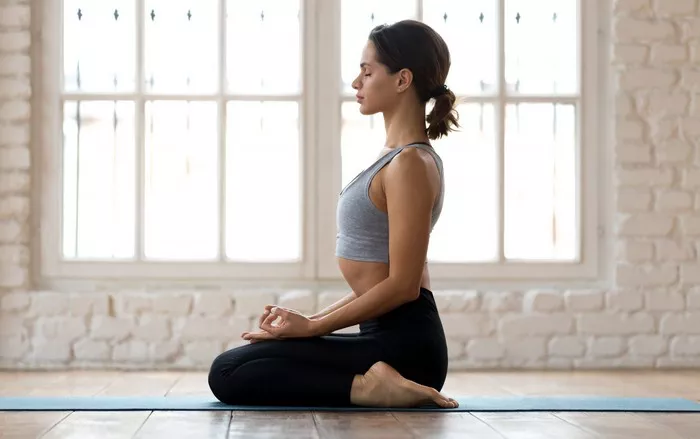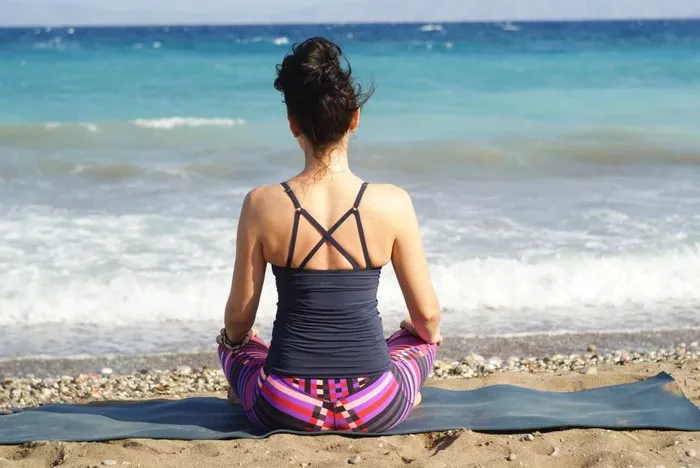Yoga is a widely practiced discipline that offers numerous physical and mental benefits, from enhancing flexibility to promoting relaxation and stress relief. Among its many postures, Child’s Pose (Balasana) is a simple and restorative pose that is often used for relaxation and stretching. However, a common question among yoga practitioners and fitness enthusiasts is whether Child’s Pose can help reduce belly fat. In this article, we will explore the role of Child’s Pose in weight loss, how it affects belly fat, and what other factors contribute to effective fat reduction.
Understanding Child’s Pose (Balasana)
Child’s Pose is a resting pose commonly performed in yoga sequences. It involves sitting back on the heels, extending the arms forward, and lowering the forehead to the ground while keeping the knees either together or slightly apart. This gentle stretch helps release tension in the lower back, hips, thighs, and shoulders.
Steps to Perform Child’s Pose:
- Start by kneeling on the floor with your big toes touching and your knees slightly apart.
- Sit back on your heels and slowly bend forward, extending your arms in front of you.
- Rest your forehead on the mat and relax your shoulders.
- Breathe deeply and hold the position for 30 seconds to a few minutes.
- Slowly return to a seated position when finished.
While Child’s Pose is undoubtedly beneficial for relaxation and flexibility, does it contribute to belly fat reduction? Let’s delve into the relationship between yoga, metabolism, and fat loss.
Can Child’s Pose Alone Reduce Belly Fat?
The short answer is no—Child’s Pose alone is not a direct fat-burning exercise. It does not involve significant physical exertion, cardiovascular activity, or strength training, which are key components of fat loss. However, this does not mean that Child’s Pose lacks value in a weight loss journey.
To understand why, we need to explore how the body burns fat. Belly fat is reduced when the body expends more calories than it consumes, leading to an overall decrease in fat stores. This typically occurs through a combination of:
Caloric Deficit: Consuming fewer calories than the body burns.
Cardio and Strength Training: Engaging in exercises that elevate the heart rate and build muscle.
Metabolism Boosting: Improving metabolic function through proper diet and active movement.
Since Child’s Pose is a passive and low-intensity stretch, it does not significantly contribute to calorie burn. However, it plays an indirect role in reducing belly fat through stress reduction and improved digestion, which we will explore next.
How Child’s Pose Supports Weight Loss Indirectly
While Child’s Pose may not directly burn fat, it provides several benefits that can support an overall weight loss journey.
1. Reducing Stress and Cortisol Levels
Stress is a major contributor to weight gain, particularly in the abdominal area. When the body experiences prolonged stress, it releases cortisol, a hormone that promotes fat storage, especially around the belly. Child’s Pose encourages deep breathing and relaxation, which help lower cortisol levels and reduce stress-related weight gain.
2. Aiding Digestion and Reducing Bloating
Child’s Pose gently compresses the abdomen, stimulating the digestive organs. This can help relieve bloating, improve digestion, and alleviate constipation. A well-functioning digestive system prevents water retention and bloating, leading to a flatter stomach appearance.
3. Improving Posture and Core Engagement
Although Child’s Pose is a resting pose, it subtly engages the core and encourages proper spinal alignment. Maintaining good posture and core stability can create the appearance of a slimmer waist over time.
4. Enhancing Mindfulness and Healthy Habits
Practicing Child’s Pose as part of a regular yoga routine fosters mindfulness and body awareness. When individuals become more in tune with their bodies, they are more likely to make healthier lifestyle choices, including proper nutrition and regular exercise.
Yoga Practices That Help Burn Belly Fat
For those looking to specifically target belly fat, incorporating more active yoga poses and sequences is recommended. Some of the most effective yoga poses for fat burning include:
1. Sun Salutations (Surya Namaskar)
Sun Salutations involve a series of dynamic movements that elevate the heart rate and improve cardiovascular endurance, helping to burn calories effectively.
2. Boat Pose (Navasana)
Boat Pose strengthens the core muscles, including the abdominals, and improves overall stability, contributing to a toned midsection.
3. Plank Pose (Phalakasana)
Holding a plank engages multiple muscle groups and increases endurance, which aids in fat loss and strengthens the core.
4. Warrior Poses (Virabhadrasana Series)
Warrior poses require strength, balance, and endurance, all of which help tone muscles and burn fat.
The Importance of a Holistic Approach
While yoga, including Child’s Pose, offers many benefits, sustainable fat loss requires a holistic approach. Here are some additional tips to achieve a flatter stomach:
1. Maintain a Balanced Diet
A healthy diet plays a crucial role in reducing belly fat. Focus on whole foods, lean proteins, healthy fats, and fiber-rich vegetables while limiting processed foods and sugary drinks.
2. Engage in Regular Physical Activity
In addition to yoga, incorporating aerobic exercises like brisk walking, running, cycling, or swimming can enhance fat-burning results.
3. Stay Hydrated
Drinking sufficient water aids digestion, reduces bloating, and helps control appetite.
4. Get Enough Sleep
Poor sleep can lead to hormonal imbalances that contribute to weight gain. Aim for 7-9 hours of quality sleep per night.
Conclusion
Child’s Pose is a powerful restorative yoga posture that supports relaxation, stress reduction, and digestion. However, it is not a direct belly fat-burning exercise. To effectively reduce belly fat, a combination of calorie-burning exercises, a nutritious diet, and a balanced lifestyle is essential. Incorporating Child’s Pose into a well-rounded yoga routine can enhance overall well-being and contribute to a healthier, more mindful approach to weight loss.
Related Topics:





















